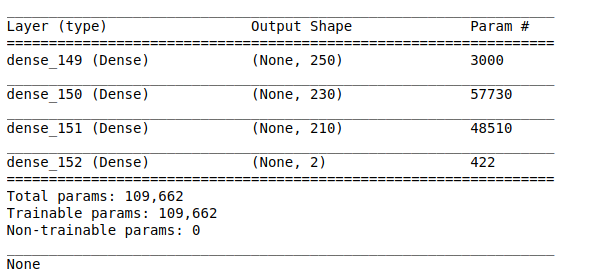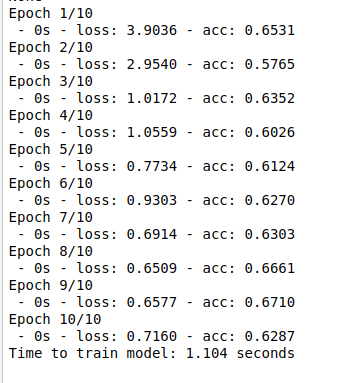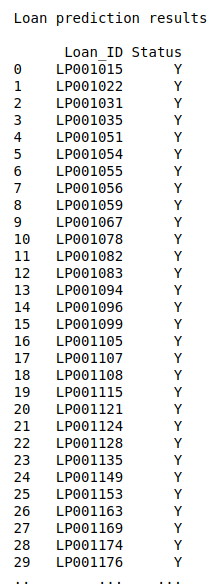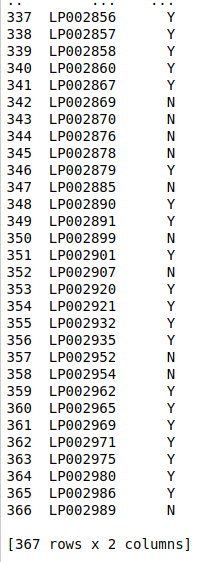To predict the loan status like approved or not using keras with deep learning in python?
Loan prediction data set. (kaggle)
Status of the Loan IDs in the testing set. (approved or not)
Import necessary libraries. (Pandas, Sequential, Dense)
Load the train and test data.
In train data we have pre classified target variable.
Load the test data.
Encode the string data with numeric data.
Build the deep learning model using keras.
Split the data train and test.
Train the model using train data.
Test the model goodness of fit using testing data.
Finally finds the status of Loan IDs in the test data.
#import libraries
import warnings
warnings.filterwarnings(‘ignore’)
import time
import pandas as pd
import numpy as np
from keras.models import Sequential
from keras.layers import Dense
from keras.utils import np_utils
from sklearn.metrics import classification_report, confusion_matrix
#load the train data
train_data = pd.read_csv(‘/home/soft50/soft50/Sathish/practice/loan_prediction/train.csv’)
#load the test data
test_data = pd.read_csv(‘/home/soft50/soft50/Sathish/practice/loan_prediction/test.csv’)
#encode the input variables
train_X = train_data.iloc[:,1:13]
df1 = train_X.apply(lambda s: s.map({k:i for i,k in enumerate(s.unique())}))
frame = [train_data.iloc[:,0],df1]
df1 = pd.concat(frame,axis=1)
#for test data
test_X = test_data.iloc[:,1:12]
df2 = test_X.apply(lambda s: s.map({k:i for i,k in enumerate(s.unique())}))
frame = [test_data.iloc[:,0],df2]
df2 = pd.concat(frame,axis=1)
#Feature selection
X_train = df1.iloc[:,1:12]
y_train = df1.iloc[:,12]
X_test = df2.iloc[:,1:12]
#make dependent variable categorical
y_train = np_utils.to_categorical(y_train,num_classes=2)
#Build the deep learning model
batch_size = 20
#shape of input
n_cols_2 = X_train.shape[1]
#create deep neural networks
model_2 = Sequential()
#add layers to model
model_2.add(Dense(250, activation=’relu’, input_shape=(n_cols_2,)))
model_2.add(Dense(230, activation=’relu’))
model_2.add(Dense(210, activation=’relu’))
model_2.add(Dense(2, activation=’softmax’))
print(model_2.summary())
#Compile the model
model_2.compile(optimizer=’adam’, loss=’binary_crossentropy’, metrics=[‘accuracy’])
#Here we train the Network.
start_time = time.time()
model_2.fit(X_train, y_train, batch_size = batch_size, epochs = 10, verbose = 2)
end_time = time.time()
elapsed_time = end_time – start_time
print(“Time to train model: %.3f seconds” % elapsed_time)
print(“\n”)
#Predict the test data
prediction = model_2.predict_classes(X_test)
pred_df = pd.DataFrame(prediction)
#Combining the results
final = [test_data.iloc[:,0],pred_df]
df3 = pd.concat(final,axis=1)
#Export as a CSV file
#df3.to_csv(‘/home/soft50/soft50/Sathish/practice/loan_prediction/result.csv’)
res = pd.read_csv(‘…/loan_prediction/result.csv’)
print(“Loan prediction results\n”)
print(res,”\n”)
print(“Count in each classes\n”)
print(res.iloc[:,1].value_counts())




